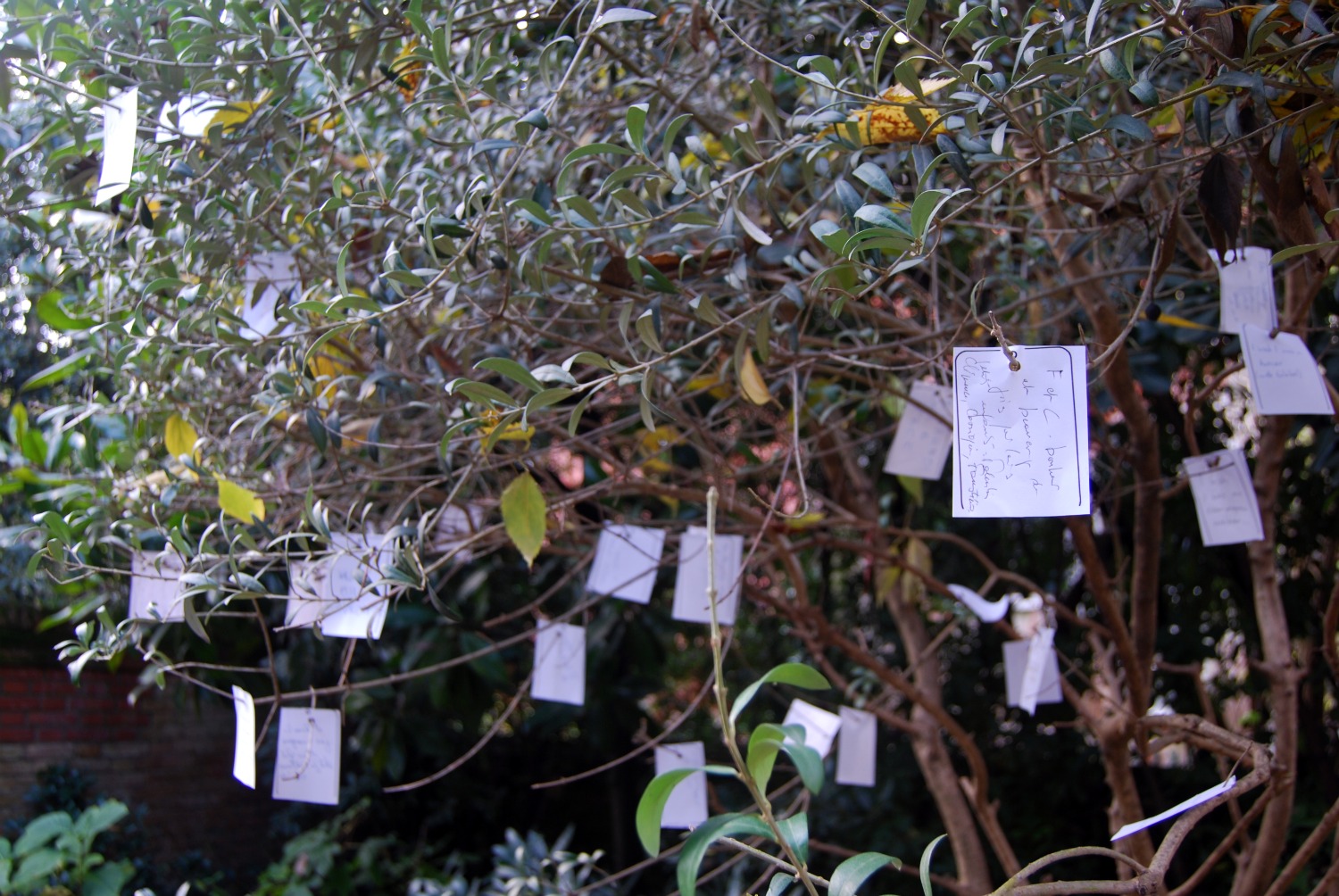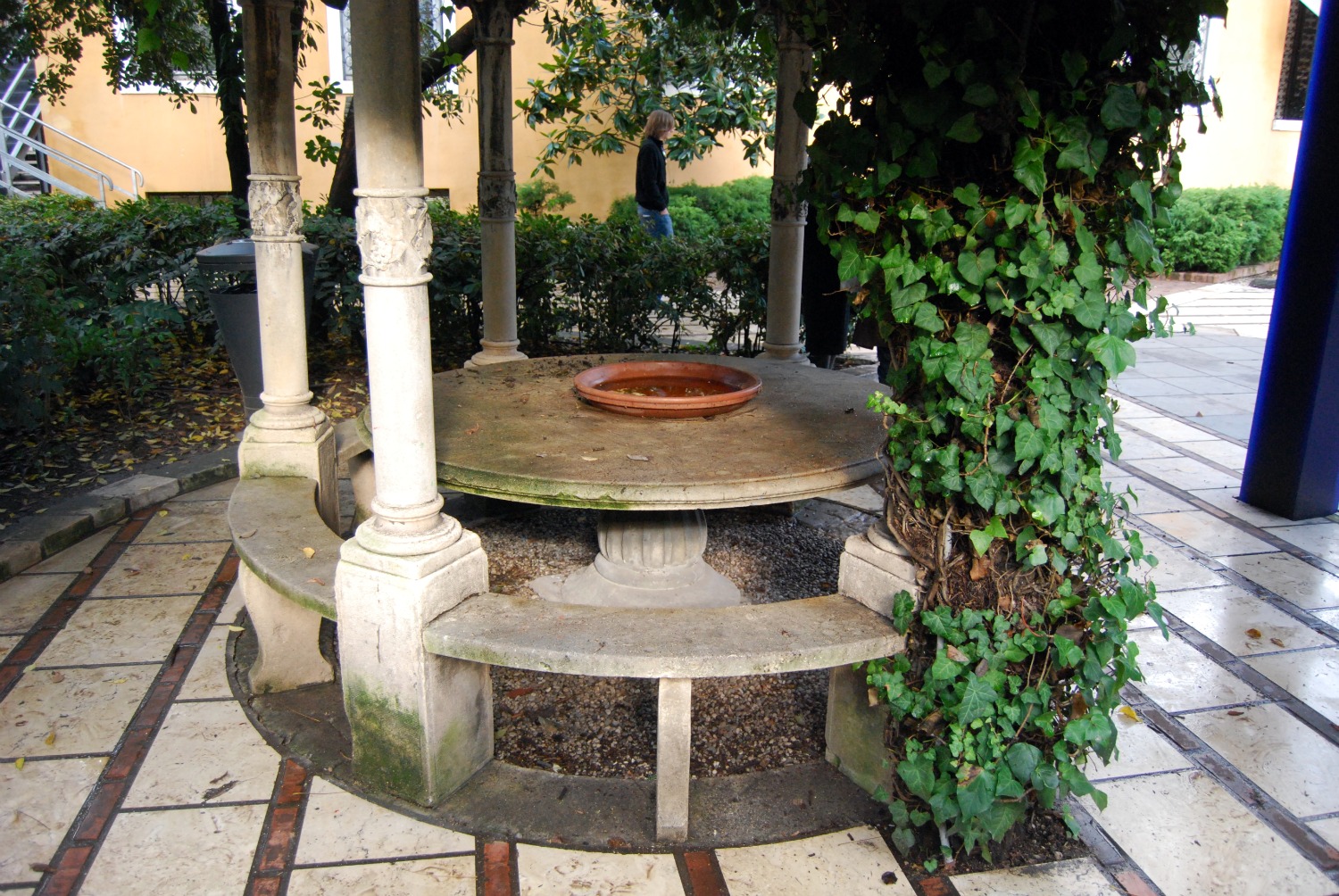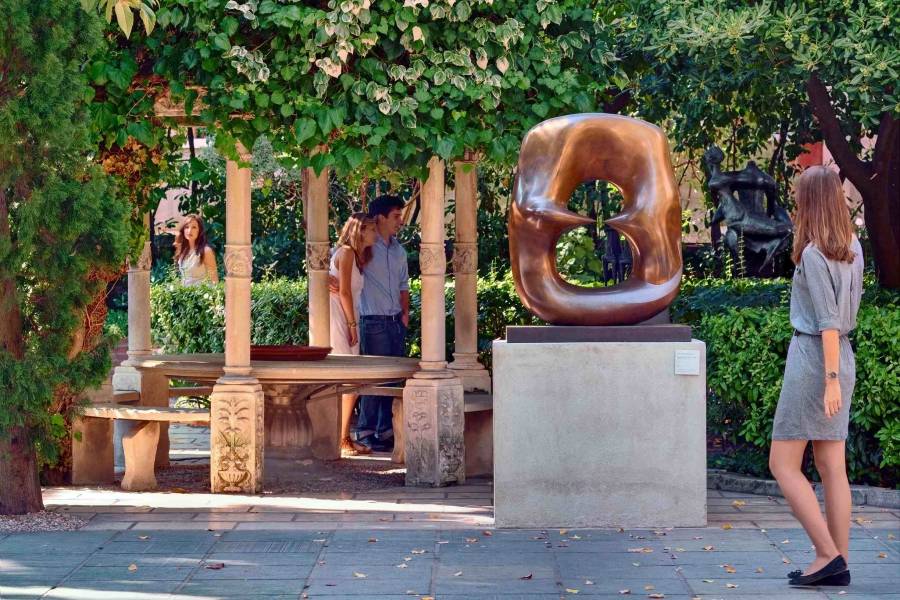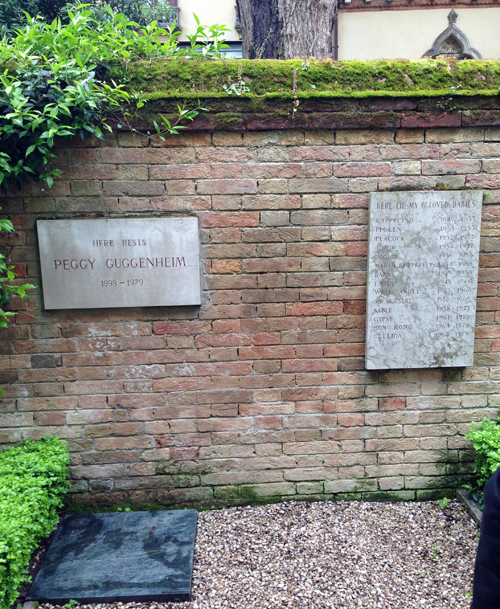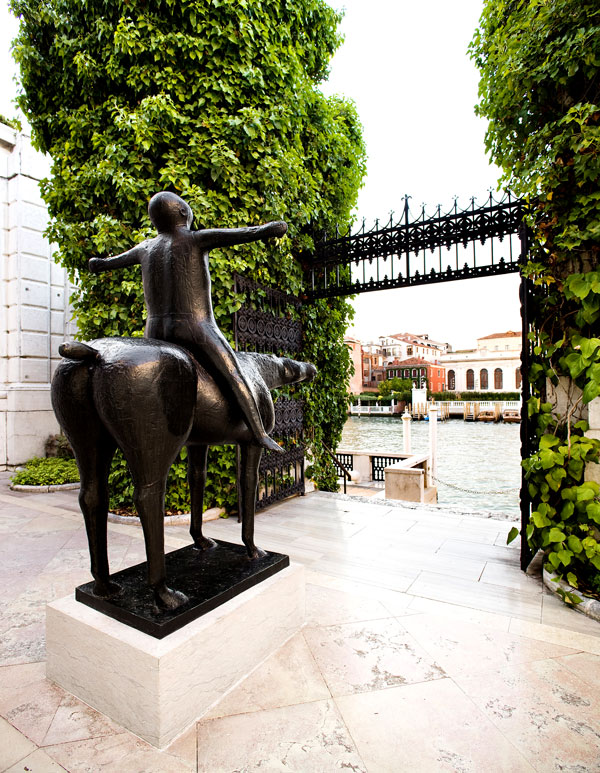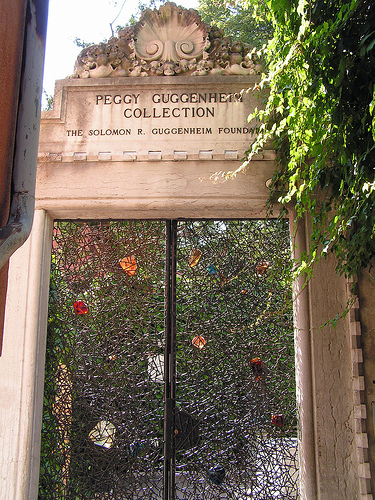
Venier dei Leoni Palace
This post is also available in:
 Italiano (Italian)
Italiano (Italian)
Venier dei Leoni palace, in the Dorsoduro district (Venice), overlooks the Grand Canal and was commissioned by the Venier family, one of the oldest in Venice. Also known as an unfinished palace, the building construction started in 1748 on a project by the architect Lorenzo Boschetti, and owes its current fame to the personal exhibition of Peggy Guggenheim who bought Palazzo Venier at the end of 1948. She lived there for the following thirty years.
Starting in 1951, and until her death in 1979, Guggenheim opened the palace and the collection to the public. This includes masterpieces of Cubism, Futurism, Metaphysical Painting, European Abstractionism, avant-garde sculptures, Surrealism and American Abstract Expressionism, by some of the greatest artists of the XX century.
THE PALACE
The building has a single-storey structure which is still incomplete. The ashlar facade in Istrian stone features a series of eight medium-sized monoforas, under which – touching the water – there are masks with lion heads: a peculiar element which is part of the palace name (“Leoni” – “lions”)
THE GARDEN
The garden can be found behind the building and features a symmetrical entrance from that of the canal. The collections of Peggy Guggenheim and the donation of Hannelore and Rudolph Schulhof are currently housed right here. The garden was restored between 1983 and 1995 and expanded in 2001. The vegetation was then almost completely renovated. It currently includes specimens of cypress (Cupressus sempervirens), yew (Taxus baccata) and magnolias flanked by overseas plants such as American lime trees (Tilia americana), Amelanchier canadensis, and Cladrastris kentukea.
In addition to several interesting botanical species, the garden also houses numerous sculptures by Arp, Giacometti, Richier, Kelly and other artists, as well as the burial place of Peggy and her dogs.
As if it was watching over them, there’s also a Wish tree – a specimen of the olive tree (Olea europea) donated by Yoko Ono to “collect wishes, so that they float in the air”.
Visitors can also admire several splendid seats in red granite and Istrian stone, as well as a pseudo-Byzantine throne in white stone and Greek marble.
This post is also available in:
 Italiano (Italian)
Italiano (Italian)
Contatti
Dorsoduro, 701-704 - Venezia(VE)
041 2405411
info@guggenheim-venice.it


